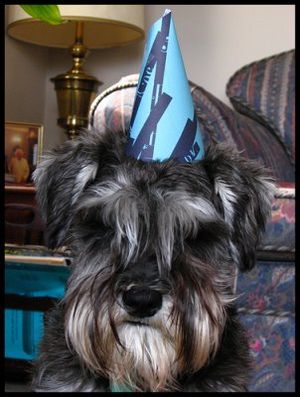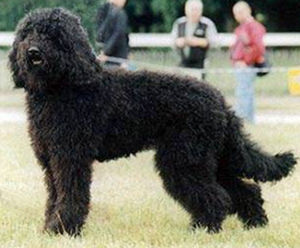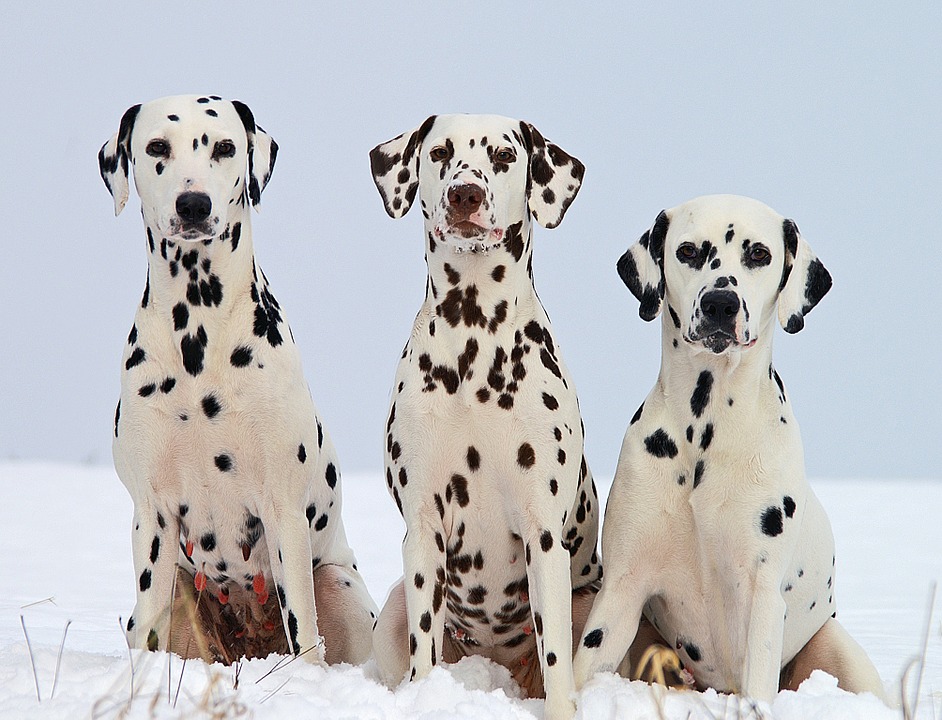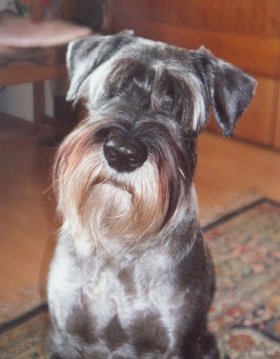 |
| Vital Statistics: |
| Place of Origin: Germany |
| Group: Terriers |
| Height: 12-14 in. |
| Weight: 13-15 lbs. |
| Life span: 12-15 yrs. |
| Trainability: high |
| Good with children: yes with early socialization |
| Good with other pets: yes, but may chase cats & small animals |
The Miniature Schnauzer was bred in Germany like its brothers, the Standard and Giant Schnauzers. It is a cross between the Standard Schnauzer and some smaller breeds like the affenpinscher and possible the Poodle.
What does the Miniature Schnauzer look like?
The Miniature Schnauzer is small and square weighing 13-15 lbs. and standing 12-14 inches tall. Its hair is hard and coarse and its eyebrows, beard and mustache are bushy. Good grooming includes brushing and trimming of the hair. The Miniature Schnauzer has a strong muzzle and a scissors bite. Eyes are oval and dark. The tail and ears are sometimes docked. Colors are black, salt and pepper or silver black.
What is the Miniature Schnauzer’s temperament?
The Miniature Schnauzer is a highly intelligent dog and seems to know what you are thinking. It learns very quickly much like its brothers, the Standard and Giant Schnauzer. The Miniature Schnauzer needs early socialization with other dogs to avoid aggressive tendencies. It needs lots of attention and training to avoid other behavior problems. It is good with children, but should be socialized early with them. As with all dogs, daily exercise is a must.
What are the Miniature Schnauzer’s uses?
The Miniature Schnauzer is a barker and makes a good watchdog. Bred to kill rats and other vermin, it excels as a mouser. The Miniature Schnauzer is capable of learning tricks quickly and loves to perform. It is a praiseworthy companion dog well suited to apartment living.
Feeding with low fat or non-fatty and unsweetened food may help avoid illness.
If you want to have a pet, Miniature Schnauzer is a good choice.
Possible Health Issues
Cataracts, progressive retinal atrophy, entropion, urolithialis (forming kidney stones), congenital megaesophagus, muscular dystrophy, von Willebrand’s Disease, Comedown Syndrome (blackheads and scabs), heart disorders, patellar luxation, osteochondrosis.
- Airedale Terrier
- American Pit Bull Terrier
- American Stratfordshire Terrier
- Australian Terrier
- Bedlington Terrier
- Black Russian Terrier
- Border Terrier
- Boston Terrier
- Bull Terrier
- Cairn Terrier
- Cesky Terrier
- Dandie Dinmont Terrier
- English Toy Terrier
- Glen of Imaal Terrier
- Irish Terrier
- Jack Russell Terrier
- Lakeland Terrier
- Manchester Terrier
- Moscow Toy Terrier
- Norfolk Terrier and Norwich Terrier
- Old English Terrier
- Scottish Terrier
- Silky Terrier
- Skye Terrier
- Smooth and Wire-haired Fox Terrier
- Soft-coated Wheaten Terrier
- Tibetan Terrier
- Toy Fox Terrier
- Welsh Terrier
- West Highland White Terrier
- Wire Fox Terrier
- Yorkshire Terrier
- Affenpinscher
- Boxer
- Dachshund
- Deutscher (German) Pinscher
- Doberman Pinscher
- Eurasier
- German Shepherd
- German Shorthaired Pointer
- German Spitz (Giant, Standard, Toy)
- Giant Schnauzer
- Great Dane
- Hovawart
- Leonberger
- Miniature Pinscher
- Pomeranian
- Poodle
- Pudelpointer
- Rottweiler
- Standard Schnauzer
- Weimaraner



